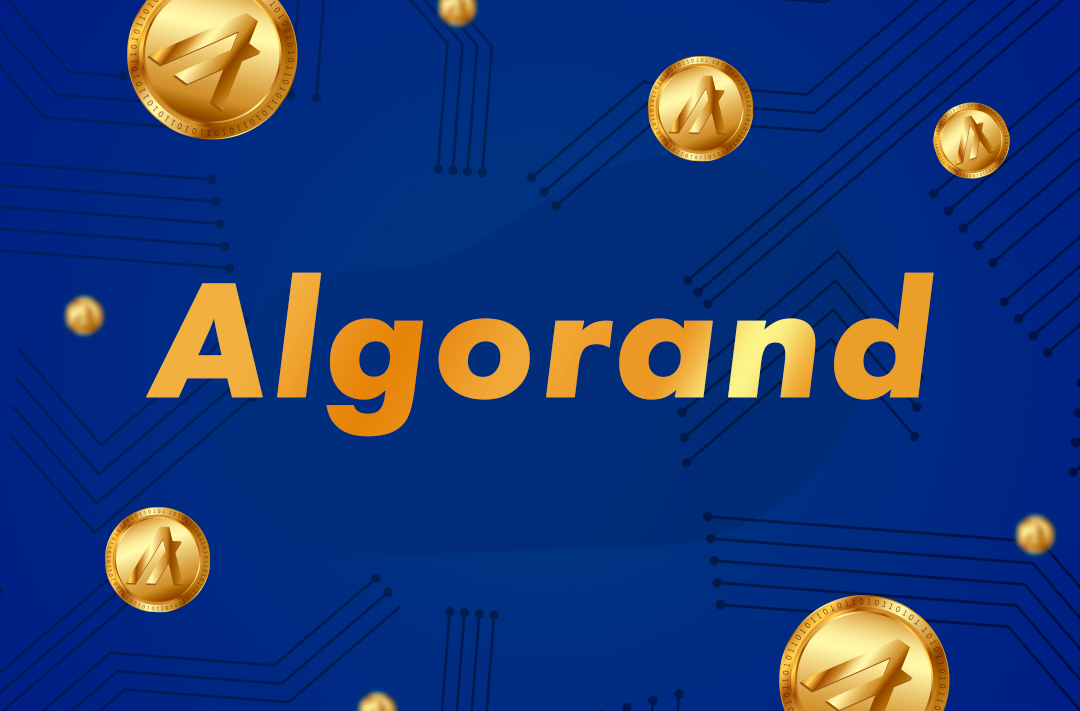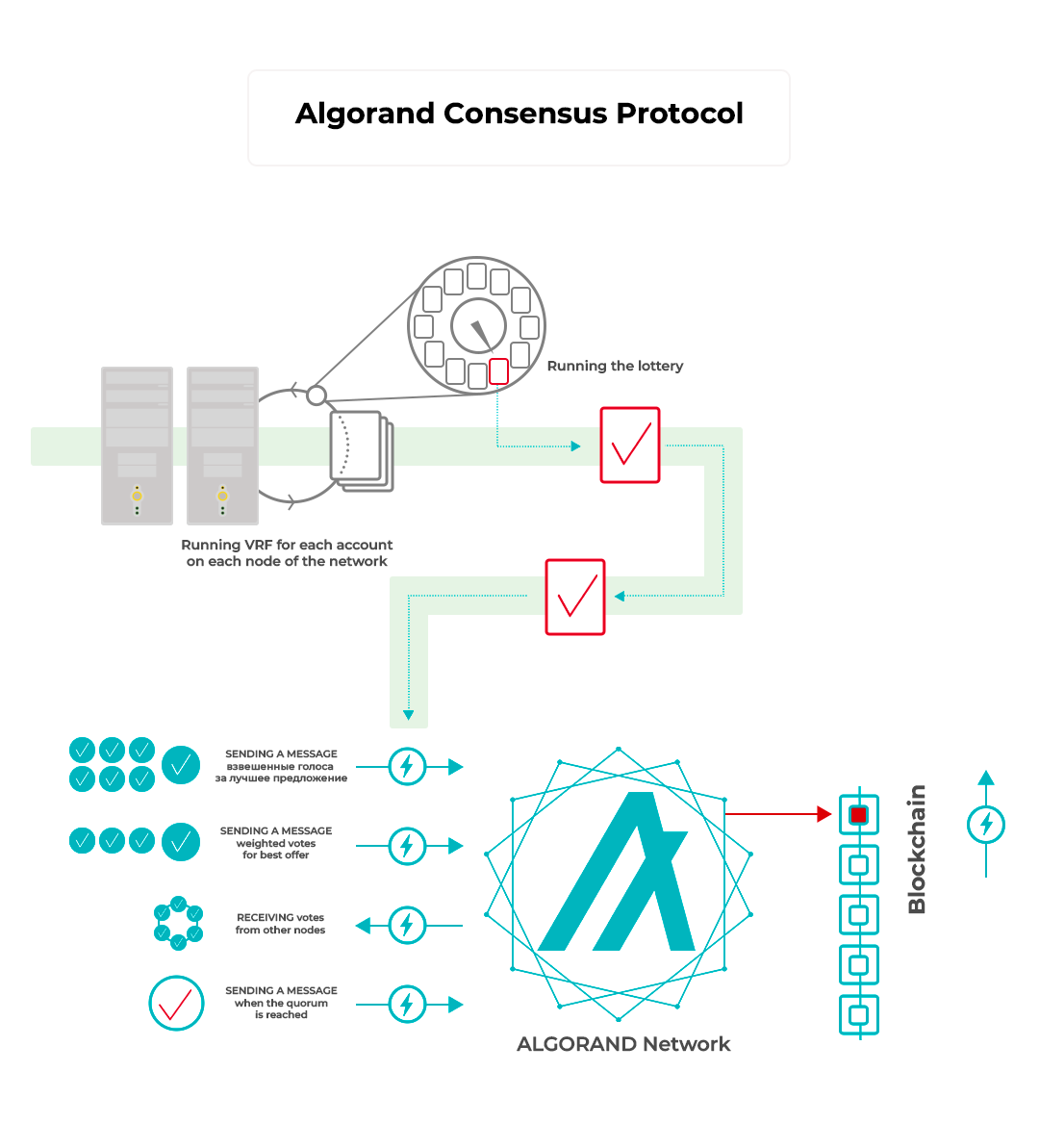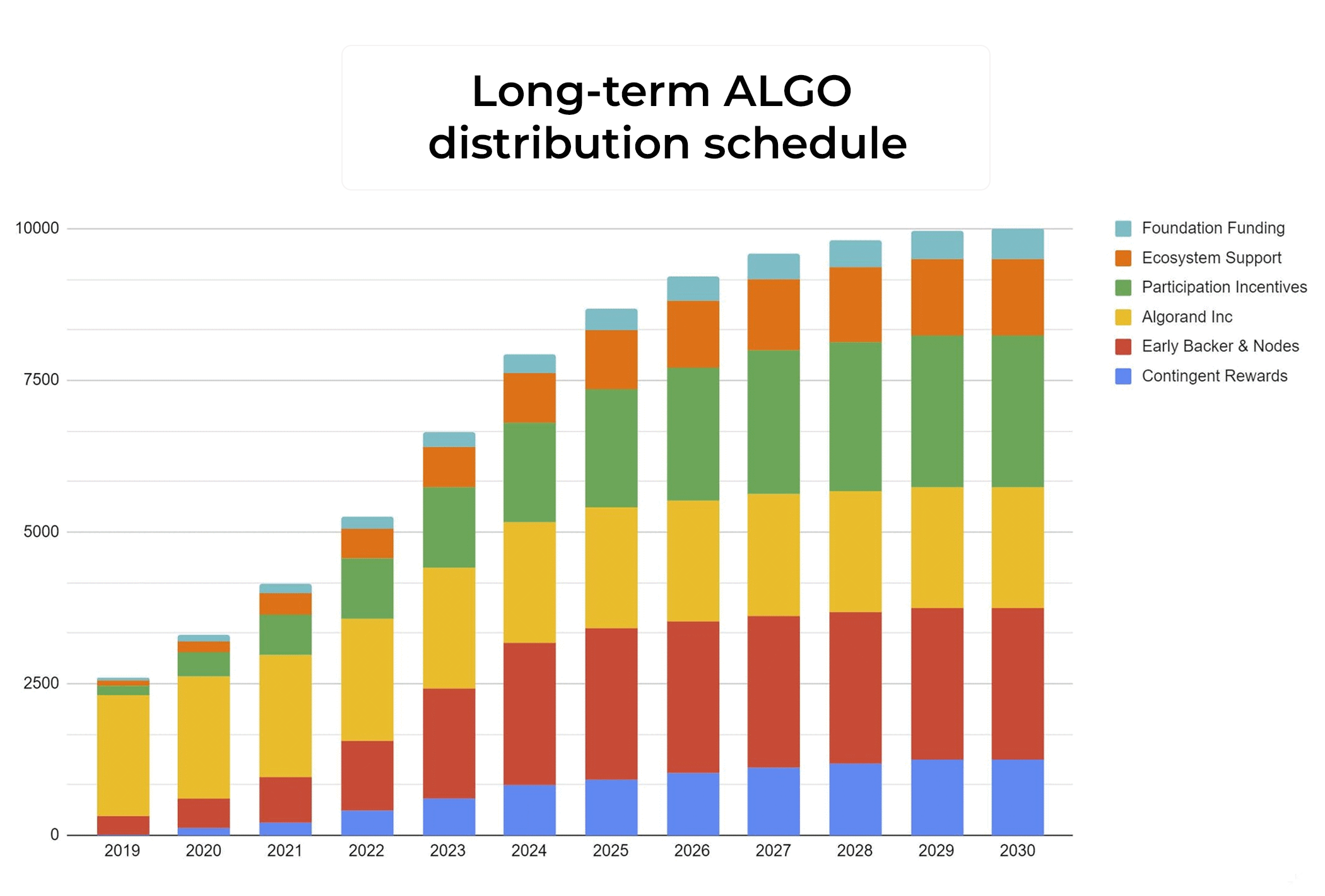What is Algorand
Algorand is an open-source blockchain platform focused on smart contracts, designed to work with the financial sector and banking institutions

31.01.2022
4267
7 min
51
. It is another Ethereum counterpart with a capitalization of more than $4 billion and is one of the top 50 cryptocurrencies.
The Algorand blockchain operates on the Pure Proof-of-Stake protocol, which can provide high network throughput comparable to popular payment systems. The protocol acts as a solid foundation for the main mission of the project, that is, to create a single decentralized economy that combines banks and cryptocurrency.
The success of the platform’s technical solutions led to the fact that one year after the launch, in the spring of 2020, the government of Marshall Islands decided to issue the state cryptocurrency SOL, taking Algorand as its basis.
The history of Algorand
The platform is developed and supported by Algorand Inc. The founder of the project is Silvio Micali, a Turing Award laureate and professor at the Massachusetts Institute of Technology.
Micali is one of the developers of two cornerstones of modern cryptography: zero-knowledge proof and probabilistic encryption.
The CEO of the project is Steve Kokinos, one of the founders of the Fuze cloud platform.
The team includes researchers, cryptographers, and mathematicians. Leading project specialists are:
- Sergey Gorbunov, Assistant Professor at the University of Waterloo, CTO of Stealth Mine;
- Nikolay Zheltovich, Professor at the Massachusetts Institute of Technology;
- Jing Chen, winner of the 2016 NSF CAREER Award;
- Naved Ihsanullah, former Mozilla developer, founder of Thought Labs.
Silvio Micali started developing the project in 2017. The first public network was launched on April 16, 2019. Two months later, the team publicly announced the ICO, which took place from June 19 to June 20 on the Binance exchange. A total of 25 million ALGO tokens were offered, and the initial public offering raised $60 million.
The first major partner of the platform is CERN, a subsidiary of the creators of PlanetWatch, a project that collects statistics on the state of the earth's atmosphere.
The Algorand Blockchain
The Algorand network is decentralized, publicly accessible, and gives every user the right to participate fully while having a low transaction cost from 0,001 ALGO.
Bitcoin, which became the first publicly available blockchain, offered the community the concept and implementation of a decentralized network. Over time, all users of the first blockchain were divided into two classes that are not interconnected: users who use the network to conduct transactions, and miners who profit from the creation of new blocks.
Everything works differently in Algorand. The network has only one class since every wallet with more than 1 ALGO gets the right to use all functions, including transfers and voting for blocks.
The blockchain structure
The Algorand blockchain structure is two-tiered and has two layers.
The first, basic level supports smart contracts and atomic swaps (transactions for exchanging digital assets without intermediaries) and also has functionality for launching tokens. At this basic layer, developers can use the Algorand Standard Asset (ASA) protocol, which allows to:
- create new tokens on the blockchain;
- transfer existing tokens into the Algorand ecosystem;
- tokenize assets, such as creating NFTs and other stable coins.
The second blockchain layer is provided for performing more complex smart contracts and developing decentralized applications. Splitting the blockchain into two layers segments the blockchain load, and therefore increases the speed of transaction execution.

PPoS protocol
According to the developers, this protocol is more energy-efficient and secure than Delegated Proof-of-Stake (DPoS) because there is no mechanism for delegating the right to approve transactions to a limited number of users. In Pure Proof-of-Stake, validators are selected randomly, with the more coins on the validator's balance, the more likely it is to be selected. The main conditions for being selected are:
- Minimum 1 ALGO token;
- The participation key that is required to confirm the block.
The developers plan to add not only a random selection mechanism but also reward management.
Algorand smart contracts
The functionality of ASC1 Level 1 smart contracts is implemented in TEAL and PyTeal programming languages, which allows you to implement both smart contracts without fixing and with full-fledged state fixing.
Using the functionality of smart contracts, users can determine the logic of transactions ranging from simply choosing how to transfer assets and creating complex application logic to new business models in various industries where automated transactions and applications are needed. At the same time, the protocol allows agreements to be executed without the need for mutual trust.
DappS and DeFi
Based on the Algorithand blockchain, developers can create decentralized financial solutions and applications, with the ability to scale and high transaction processing speed.
Network users can secure their accounts using a hardware wallet, a smart contract-based spending key, or a multi-signature. Another feature of the platform is the automatically updated spending policies for its public address, which are necessary to automate recurring payments.
The blockchain compression algorithm, Vault, is responsible for the speed of the blockchain. Blockchain nodes do not store data about transactions that have been executed. Instead, each transaction is valid for a strictly limited period of time. The wallet balance is not linked to the transaction history, so forgotten accounts that have a zero balance are automatically deleted without affecting the payment network.
Algo token
The utility token of Algorand is Algo. The coin is used to provide consensus and transaction fees. In the future, the token will be used to develop the ecosystem and as a reward for users who participate in voting.
The official release date is June 22, 2019. IEO, Binance's initial exchange offering, was used to distribute it. Coins were distributed in a Dutch auction format, that is, the value was set not in ascending order, but on the contrary, in descending order.
Thus, the market itself formed the value of the token. At the time of writing, the coin is trading at $1,62. You can buy the coin on Binance, Bitfinex, KuCoin, and other major exchanges. The maximum issue is 10 billion tokens, which will be distributed until 2030. A total of 6,9 billion tokens are in circulation. Staking participants who lock in their funds for a potentially long period are rewarded.

After the initial public offering, the project raised $120 million from Union Square Ventures, Pillar, and Brainchild. In addition to listing on exchanges, the token was distributed with the help of the Algorand Foundation. The first auction was held on June 19, 2019, at which 25 million tokens were sold at $2,4.
Algorand Wallets
Algorand supports several types of wallets, both from project developers and exchange ones.
Algorand Wallet is the official wallet from the developers of the platform. You can use it to make transactions, as well as hold tokens, and participate in staking. It is only available on mobile platforms.
My Algo is a non-custodial web wallet that implements the full functionality of all the features of the platform. It allows you not only to send and receive tokens, but also to create multi-signature accounts, interact with smart contracts, dApps and DeFi, and participate in staking.
Large services such as Bitfinex, KuCoin, Binance also allow you to store ALGO on your exchange wallets.
Advantages and disadvantages of Algo
More than 500 projects are developing blockchain solutions based on Algorand, the government of the Marshall Islands is using Algo to implement blockchain into the state apparatus. As of March 03, 2020, the SOV digital currency has been in circulation along with the US dollar and has been an official means of payment. The coin has a real demand in the market and this is due to the possibility of using the token in various fields, ranging from payment applications to hype NFTs.
However, Algo operates in a fairly competitive niche, where other projects offer higher transaction speed, for example, Solana blockchain can conduct from 50 000 transactions per second at an average commission of $0,00025. Polkadot, Tron, and Cardano are also not to be forgotten.
But despite this, Algorand continues to attract the attention of governments and businesses with its solutions. For example, the Abris.io project launched an NFT white label and NFT trading platform on the Algorand blockchain.
Low transaction fees and advanced blockchain architecture are the main reasons why the platform is becoming widespread in the market.
Useful material?
Basics
Why Satoshi Nakamoto’s technical manifesto for a decentralized money system matters
Oct 31, 2022
Basics
Experts evaluated the development prospects of the new ecosystem and the investment attractiveness of its token
Oct 20, 2022
Basics
How to track fluctuations correctly and create an effective income strategy
Sep 13, 2022
Basics
Review of the most profitable offers from proven trading platforms
Aug 29, 2022
Basics
The Ethereum Foundation team has published a breakdown of major misconceptions about the upcoming network upgrade
Aug 18, 2022
Basics
What benefits the exchange offers, and what else is in the near future
Aug 4, 2022









 Telegram
Telegram  Twitter
Twitter